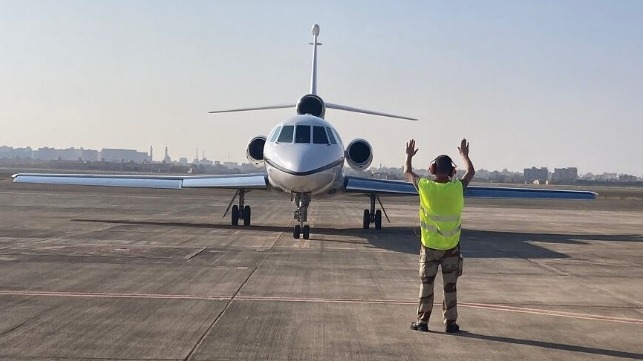France, India Strengthen Naval Cooperation as Chinese Presence Grows

Last week, India and France conducted joint surveillance and mapping of the southwest Indian Ocean, the latest instance of growing cooperation between the two powers in maritime affairs. An Indian Navy Boeing P-8 patrol aircraft arrived in Reunion - a French Overseas territory in the Indian Ocean - on November 8. It would team up with a French Navy Falcon 50 maritime aircraft for the surveillance over the waters of Mozambique Channel, Mauritius and Reunion.
This year has seen an increase in joint exercises between the French and Indian navies, with the first mission kicking off in March 2022. Another joint surveillance exercise followed in May 2022 involving an Indian P- 8 aircraft and the French frigates Floreal and Nivose.
According to the Indian Navy, the joint surveillance exercises go beyond seabed mapping. The strategic allies are committed to combating piracy, drug trafficking, arms smuggling and the presence of “extraneous powers” on the eastern seaboard of Africa as part of their maritime security cooperation.
“This deployment will further enhance maritime domain awareness, security and safety in the Southern Indian Ocean Region (IOR),” stated the Indian Navy.
One of the cornerstones of India’s naval strategy in the recent past has been the consolidation of strategic partnerships in the Indian Ocean region.
While India is a member of the Quadrilateral Security Dialogue (QUAD) consisting of Australia, Japan and the US, its naval initiative with France has been more prominent. France – the external nation with the largest territorial presence in the region - has similar reservations about the rise of Chinese influence.
India has a tense relationship with China, thanks in part to long-simmering border disputes and Chinese naval activity next to Indian seas. India’s Strategic Forces Command was forced last week to suspend a ballistic missile test due to the presence of a Chinese missile tracking vessel in the Indian Ocean.
Earlier, India had issued a NOTAM (Notice to Airmen) with an expanded no-fly zone over Bay of Bengal for the test of a long-range ballistic missile on November 10-11. This was cancelled on November 7 with the launch window pushed to November 23- 24. The Indian Navy said it was monitoring the movements of a Chinese research vessel to ensure it does not track its missile launches.
China’s Yuan Wang-6, an advanced missile and satellite-tracking ship, is said to be operating within the Indian Ocean. Early this month, it was located sailing off the coast of Bali. In August, another Chinese satellite tracking vessel, the Yuan Wang 5, docked at Sri Lanka’s Hambantota Port on a “replenishment visit.”
China has increased its interest in the Indian Ocean due to its strategic maritime trade routes, which are needed to supply the Chinese market with oil and to deliver Chinese goods to Western consumers. Chinese state-owned companies have invested in seaports spanning the width of the Indian Ocean, including outposts in Kenya, Djibouti, Pakistan, Sri Lanka and Myanmar (planned).
